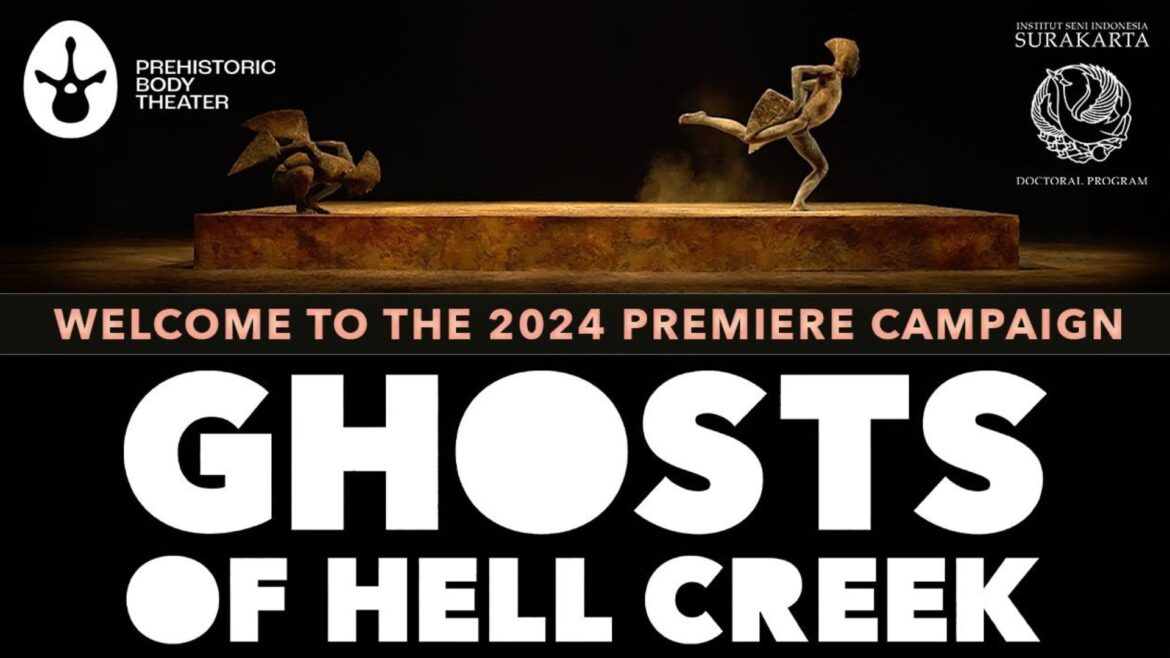We are in Montana, 60 million years ago. A group of Actecraptors enters. These graceful, feathered dinosaurs are feeding and courting. Occasionally, mammals dart about.
Dinosaurs were predominant during the Mesozoic Era, which lasted for approximately 150 million years. Around 66 million years ago, a massive asteroid hit Earth. The environmental changes led to the extinction of dinosaurs. Amongst the survivors were primates called Purgatarius. These were our earliest primate ancestors. The Purgatarius interacts, as a single Actacraptor darts across the stage, emphasizing the demise of the dinosaurs and the rise of mammals.
This tale is presented by the Prehistoric Body Theater. Based in Java, Indonesia, this group combines dance, music, and science to create a narrative based on the latest paleontological discoveries. The mating rituals of Acteraptor are based on a traditional romantic dance called gandrung. The name comes from the Javanese word for love. The dance is a symbol of cultural identity. The dancers use traditional Indonesian movements to create courting dinosaurs. The music used throughout the production is a modification of traditional music, written after the maestros meet with the elders (the keepers of traditions).
View this post on Instagram
This performance brings us face-to-face with our past. We watch dinosaurs dance into extinction, while our ancestors replace them. It serves as a warning of how random events can change the thrust of life. The asteroid caused climate change, which doomed the dinosaurs. Is it possible that the climate changes we are creating could doom mammals?
The Prehistoric Body Theater offers a unique glimpse into the distant past. Their combination of traditional dance, music, and science recreates the movement of animals that are long extinct. They deal with the ideas of mass extinction, evolution, and climate change. Their thought-provoking presentation is thoroughly enjoyable.
